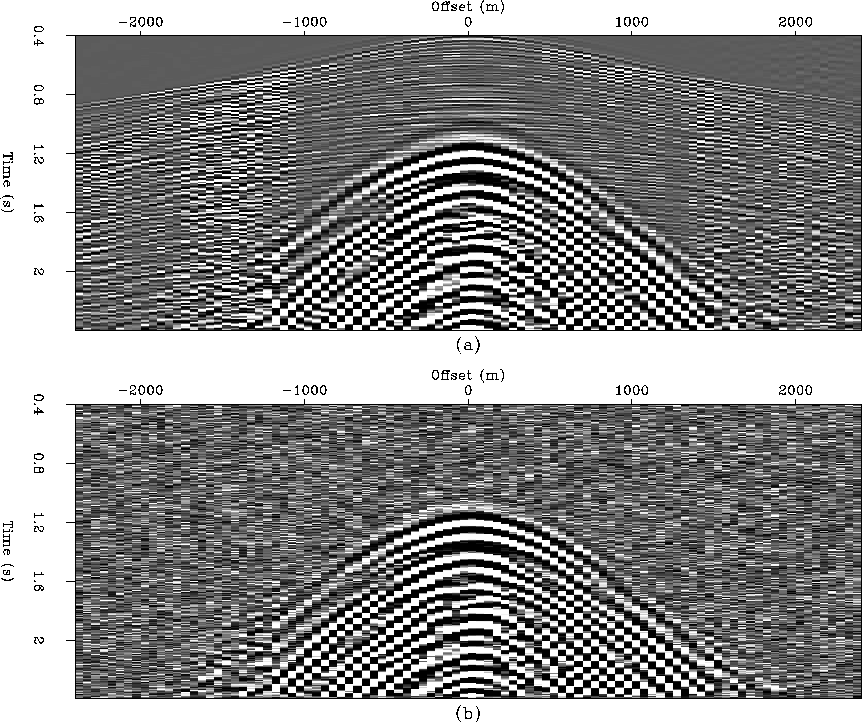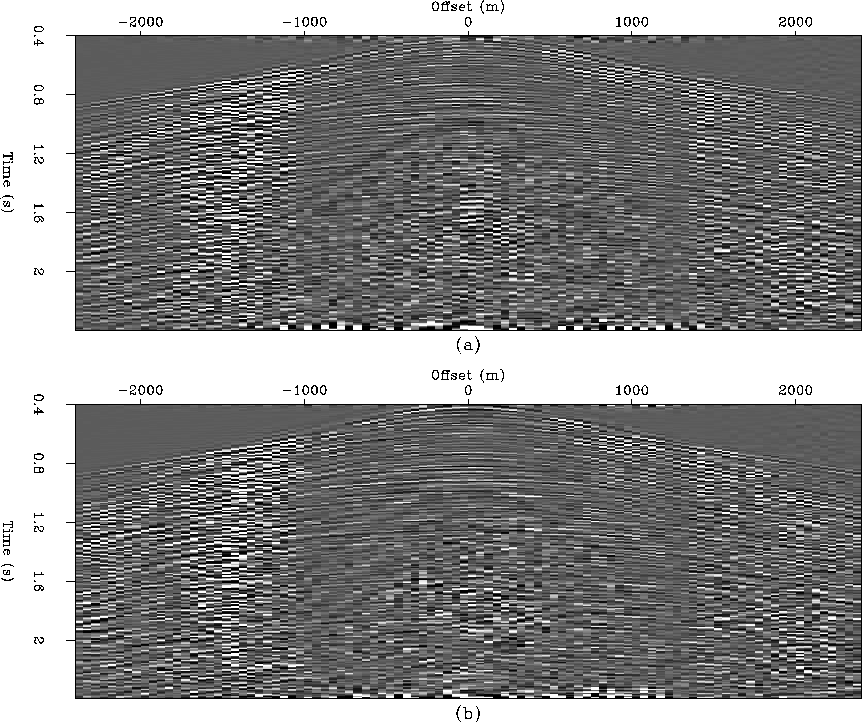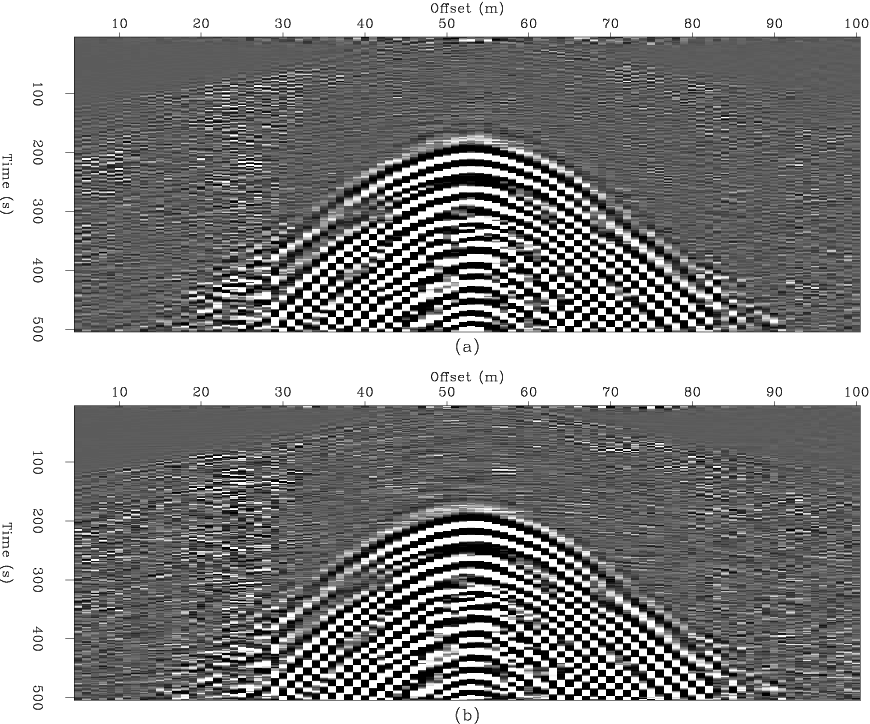




Next: Attenuation of multiples
Up: Coherent noise attenuation results
Previous: Coherent noise attenuation results
The first test aims to attenuate severely aliased hyperbolic
ground-roll. The shot gather in Figure 1a comes from
a 3-D land acquisition survey in Saudi Arabia. This shot gather
has been previously used by Brown et al. (1999)
and Fomel (2000). With this field example,
because the noise and the signal span distinct frequency bandwiths,
the ground-roll may be attenuated by applying a high-pass filter.
However, Fomel (2000) shows that the separation in that
case is far from optimal. Nonetheless, a low-pass filtering of the
data gives an excellent ground-roll model that can be later used for
the coherent noise attenuation. Figure 1b shows the noise model
obtained with a bandpass filter. We added random noise to the noise
model in order to stabilize the PEF inversion. We then estimated the
noise PEFs N from this model.
After building the noise model, we performed the coherent noise attenuation
using the two preceding schemes (equations (2) and
(4)). The PEF and patch sizes
are different in the two cases. With this dataset, we noticed that a larger
PEF was needed in the subtraction scheme. The number of iterations
needed in the PEF estimation and in the final inversion is the same
for both methods. The parameters used in the Wiener-like technique
are directly taken from Brown et al. (1999) and
correspond to the best possible combination of parameters for an optimal
separation of the noise from the signal.
Figure 2 shows the result of the noise
attenuation for both methods. The two panels look similar
and both show that the ground-roll has been correctly
separated from the signal. Figure 3 shows the
estimated noise computed by subtracting the signal in Figure
2 from the input data in Figure
1a.
We see that the subtraction did a better job at preserving the signal
because few coherent events remain
outside the ground-roll cone in the estimated noise panel
in Figure 3a.
dune
Figure 1 (a) Ground-roll contaminated
shot gather. (b) The ground-roll model used to compute the noise PEF
N (low pass filter of a, plus random noise).




 dune-signal
dune-signal
Figure 2 (a) The estimated signal
using the subtraction scheme. (b) The estimated signal using the
Wiener-like method. Both results are very similar.




 dune-noise
dune-noise
Figure 3 (a) The estimated noise
using the subtraction scheme. (b) The estimated signal using the
Wiener-like method. Less coherent noise is left outside the
ground-roll cone for the subtraction method.










Next: Attenuation of multiples
Up: Coherent noise attenuation results
Previous: Coherent noise attenuation results
Stanford Exploration Project
4/29/2001



